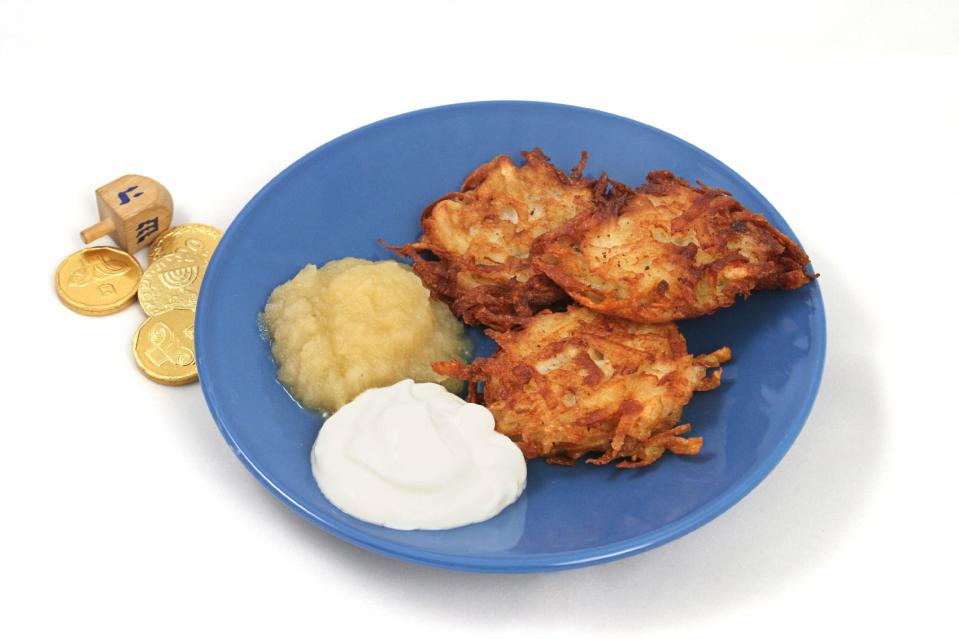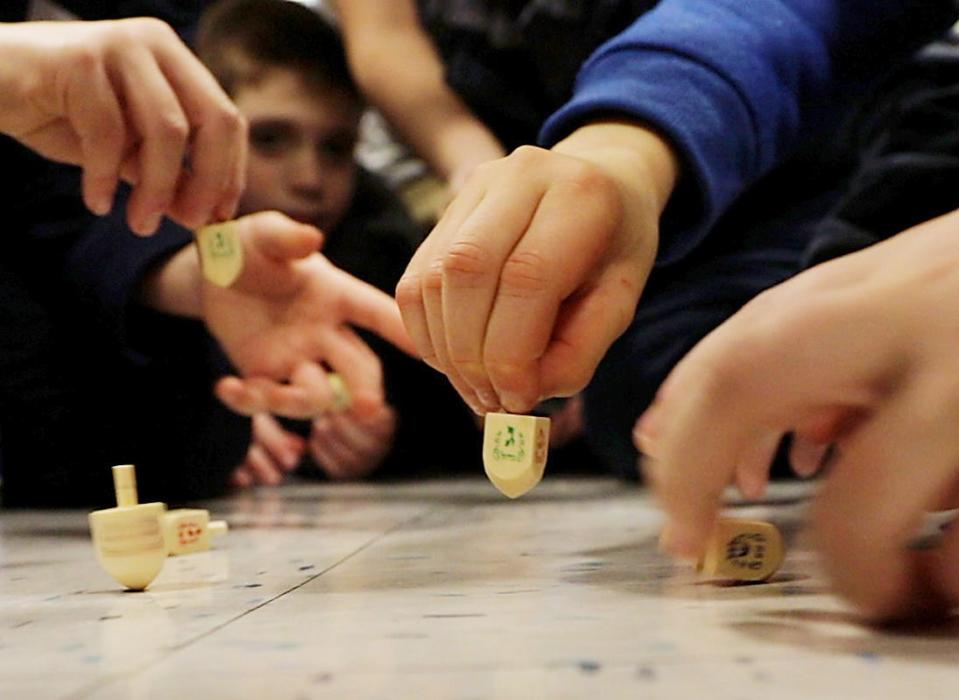What's Hanukkah all about? Here are 8 things to know about the 8-day holiday
Hanukkah — which is a symbol of freedom and light to all — actually commemorates a two-pronged miracle. Here are eight things to know about this Jewish religious holiday.
First, a little history lesson. The Seleucid Greeks invaded the Jewish homeland of Israel some 2,200 years ago and ordered the Jews to stop practicing their religion. They also defiled the Holy Temple in Jerusalem. But a band of brave Jews, the Maccabees, fought to regain religious freedom and, against the odds, overcame the enemy and recaptured control of Israel. When they went to rededicate their defiled temple, they found only enough pure oil to light the menorah in the temple for one day. Miraculously, it continued to burn for eight days, until more oil could be found.
Not a good time to diet

The eight-day holiday is celebrated with prayers of gratitude, a menorah lighting ceremony, and eating oil-laden foods, including jelly doughnuts and latkes, a type of potato pancake, to symbolize the miracle oil that burned for eight straight days.
Dreidels add a fun spin

People also celebrate by playing dreidel, a four-sided spinning top with Hebrew letters. Each side of the dreidel has a different Hebrew letter, and they form the acronym for "Nes Gadol Haya Sham," which means "a great miracle happened there," referring to the miracle in Israel at the time of the Maccabees.
The tradition of dreidel began because the Seleucid Greeks outlawed Jewish studies and Jews pretended to play games while they were actually studying holy books.
More:Eight objects tell the story of the eight days of Hanukkah
There are various ways to play the game. Many try to see how long they can spin their device or find unique ways of spinning the dreidel, such as upside down. But the classic way is in a group setting with coins or chocolate Hanukkah "gelt." Players win or lose points depending on what Hebrew letter their dreidel lands on.
Hanukkah, Hanukah or Chanukah?
The only standard spelling of the holiday is in Hebrew. It's trickier to translate the word into English characters, so there are many spelling variations, including Hanukkah, Hanukah and Chanukah, and none of them is wrong. The Associated Press style adopted by NorthJersey.com uses Hanukkah. The word means "inauguration" in Hebrew and refers to the rededication of the Holy Temple after it was defiled by the enemy.
Why does it start on a different date each year?
The Festival of Lights always begins on the same day of the Jewish calendar, the 25th day of Kislev. But because the Jewish calendar is lunar, the 25th day of Kislev lands on a different date of the Western calendar every year — anytime between late November and late December. This year, Hanukkah began after sundown on Dec. 18 and will conclude on Dec. 26.
What's a menorah, and how do you light it?
A Hanukkah menorah, or candelabra, commemorates the lamp that was lit daily in the Holy Temple in Jerusalem using pure olive oil. Over the years people have created variations in many shapes and sizes. But a proper Hanukkah menorah must have eight candles of the same height with one that stands apart, called the shamash, or helper candle, which is used to light the others.
The menorah is lit every night after sundown and candles are lit from left to right. The menorah is placed in a window or doorway to publicize the miracle of the holiday.
Where's the largest menorah?
A 36-foot-tall menorah is at Manhattan's Grand Army Plaza in New York, and it has been certified by Guinness World Records as the world's largest.
What's the holiday's take-home message?
Hanukkah offers many lessons: Some say it teaches that a little light can dispel the deepest darkness. Others believe its message is a universal one about a moral and spiritual victory over the dark forces of religious oppression. And many see the Hanukkah story as one about Jewish survival.
For Rabbi David-Seth Kirshner of Temple Emanu-El in Closter, the message is one of hope and continuance: "After the destruction and defilement of the temple, the surviving Israelites still had the hope to look for oil and to light it. They never lost hope, even in rubble or despair."
Rabbi Richard Wolpoe of Teaneck, an associate chaplain at Jewish Senior Services in Bridgeport, CT, added, "Individuals and communities have a right to a form of self-determination. To me that is the religious 'freedom' message of Hanukkah; namely 'thou shalt not impose' your beliefs on others."
This article originally appeared on NorthJersey.com: Here are 8 things to know about the 8-day holiday of Hanukkah

